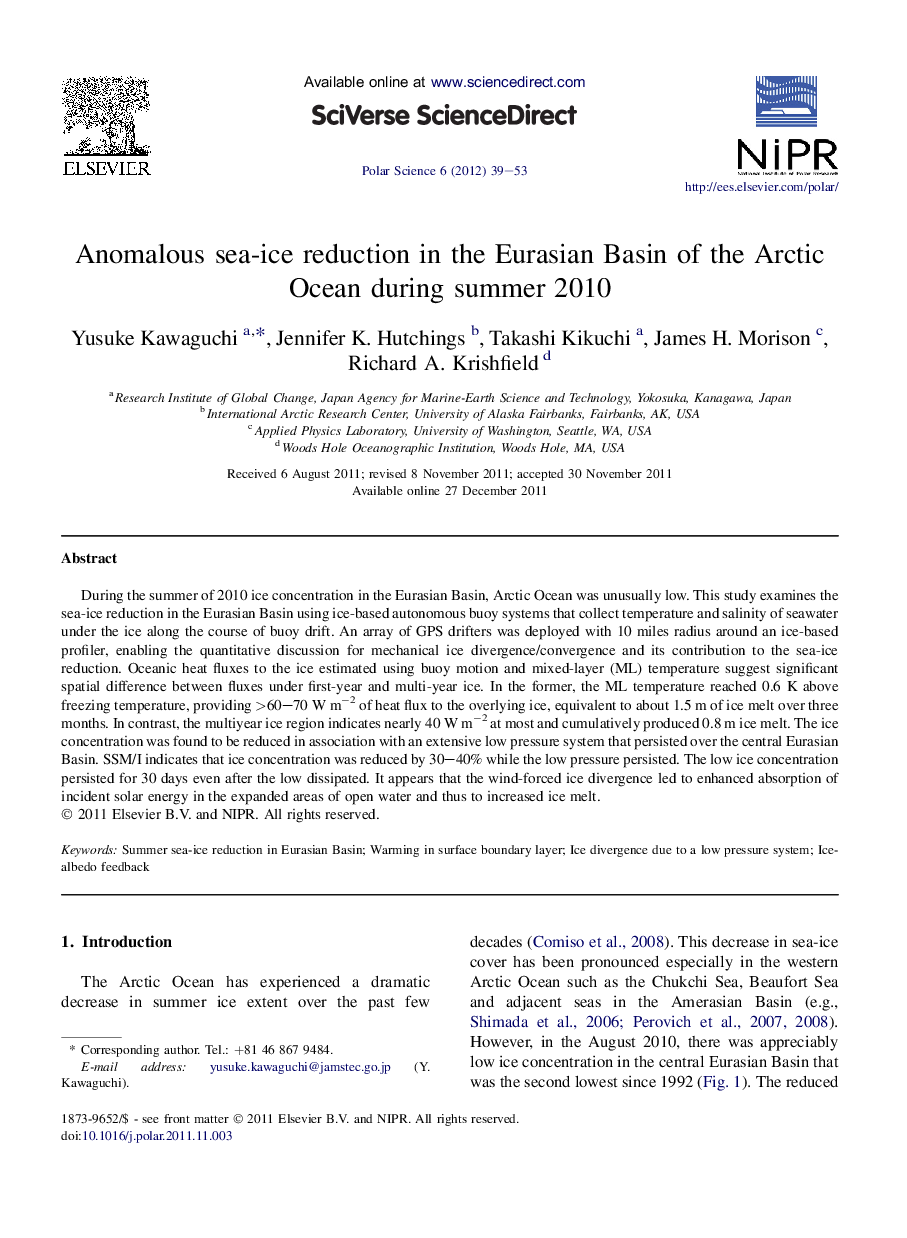| Article ID | Journal | Published Year | Pages | File Type |
|---|---|---|---|---|
| 4683377 | Polar Science | 2012 | 15 Pages |
During the summer of 2010 ice concentration in the Eurasian Basin, Arctic Ocean was unusually low. This study examines the sea-ice reduction in the Eurasian Basin using ice-based autonomous buoy systems that collect temperature and salinity of seawater under the ice along the course of buoy drift. An array of GPS drifters was deployed with 10 miles radius around an ice-based profiler, enabling the quantitative discussion for mechanical ice divergence/convergence and its contribution to the sea-ice reduction. Oceanic heat fluxes to the ice estimated using buoy motion and mixed-layer (ML) temperature suggest significant spatial difference between fluxes under first-year and multi-year ice. In the former, the ML temperature reached 0.6 K above freezing temperature, providing >60–70 W m−2 of heat flux to the overlying ice, equivalent to about 1.5 m of ice melt over three months. In contrast, the multiyear ice region indicates nearly 40 W m−2 at most and cumulatively produced 0.8 m ice melt. The ice concentration was found to be reduced in association with an extensive low pressure system that persisted over the central Eurasian Basin. SSM/I indicates that ice concentration was reduced by 30–40% while the low pressure persisted. The low ice concentration persisted for 30 days even after the low dissipated. It appears that the wind-forced ice divergence led to enhanced absorption of incident solar energy in the expanded areas of open water and thus to increased ice melt.
